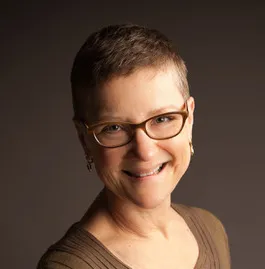Lessons in inclusion from the corporate sector

It is well documented that UK civil society doesn’t represent wider society. Only Barnardos, St Mungos and Victim Support featured in Stonewall’s Top 100 Workplace Equality Index 2018. Furthermore, research by Colour of Power published in October 2017 found that only two of the top 10 charities have women chief executive officers.
Charities need to do more to encourage diversity and tap into the wealth of resources available by employing staff from varied backgrounds. There is a lot the sector could learn from work already underway throughout the corporate and public sectors to increase representation at all levels within their workforces.
In November 2017, the Charity Commission published research into the demographic of charity boards and found that there were twice as many men as women. Just as worrying is that it also found that 92 per cent of trustees are white, with the average age of 55-64.
ACEVO’s Pay and Equalities Survey published in February 2018 found that a shamefully small number of civil society CEOs are from a black, Asian and minority ethnic (BAME) backgrounds. In publishing the report, ACEVO called for every charity CEO and individual in a position of power in the sector to ask themselves what they can do to enable the development of a more diverse sector.
Several initiatives have been announced recently to tackle these issues. In November 2018, the Institute of Fundraising launched the Change Collective with a Manifesto to create a fundraising profession where “everybody fits”. ACEVO has also announced that it will be working with the voluntary sector as a whole to prioritise action to break down the barriers and bias that exist.
For some charitable organisations it can be hard to get diversity and inclusion initiatives to the top of the agenda. To help charities to make the business case, we have to look at what the benefits of a more diverse workforce actually are.
The case for diversity appears fairly self-evident. Increasing diversity in the charity sector tends to increase innovation, as people challenge accepted norms and proffer differing opinions, enabling them to solve problems better. Without diverse teams, organisations can be vulnerable to biases and "groupthink".
Having a more representative workforce also builds trust with the people and communities it serves. This is not altruistic; it is about getting the best out of people in the best possible environment to help beneficiaries the best we can.
It also makes sound business sense. Management consultancy McKinsey & Company’s 2018 report Delivering through Diversity found that the companies that are in the top quartile for diversity experience above-average performance. It can also genuinely benefit the “dominant group”, as well as the minority group, as the majority are exposed to different ideas, cultures, approaches that can challenge and improve them cognitively, as well as socially.
“Real diversity and inclusion can deliver more engaged employees and customers, improved employee recruitment and retention, increase productivity and better group decision-making processes," says Stephen Frost, CEO of inclusion and diversity consultancy firm Frost Included. "Real inclusion saves money and improves efficiency in the systems of an organisation.”
Insurance giant Aviva plc conducted an assessment of companies that had achieved significant growth to see what lessons could be learned. It found that diversity and inclusive cultures are key features shared by these companies. Once this had been understood, Aviva decided that these were attributes it wanted to have and this led to Jan Gooding’s appointment in 2017 as global inclusion director to push this agenda right at the top of the organisation worldwide.
To get noticed, this work has to be connected to the organisation's core purpose. Aviva created the Inclusion Council, which is working globally to ensure that inclusion is embedded in the business rather than stuck in the “HR ghetto”.
Gooding says that it is also important that this work is led from the very top and that it appears genuine so as to gain trust and gather momentum throughout the organisation.
A good example, says Gooding, was when Aviva chief executive Mark Wilson attended London Pride and tweeted from the top of the bus in the parade. "He certainly didn’t attend quietly," she adds. "And this was something that had never happened before."
Gooding herself is chair of Stonewall. "None of this is tokenistic," she says. "It looks meaningful, which means staff are also more likely to get behind it."
Another organisation that offers some insight into how best to implement progressive programmes in this area is the Bank of England, which launched an inclusion strategy in February 2017. The programme aims to build greater diversity across the organisation in order to better reflect British society, says Simon Fillery, head of inclusion at the bank.
"The strategy creates a framework with which to engage all colleagues, and to ensure that we continue to develop a culture at the bank where everyone can contribute their best work," he says. "The strategy looks at all aspects of diversity, including gender, BAME, social mobility and this year we will begin to look at diversity of thought."
The initiatives introduced at the bank are split into three main areas:
• Recruitment
The bank produced an Inclusive Recruitment guide to help hiring managers ensure that: the language in job adverts is gender neutral; to develop diverse candidate lists for jobs; and to understand the importance of interviewing people with diverse panels in order to avoid unconscious biases. The bank advertises on job boards specifically geared towards attracting diverse candidates and utilises specialist recruitment agencies that promote roles to women returning to work.
• Retention
The bank has 10 diversity networks including an active gender network, Women in the Bank, which celebrated its 10th anniversary this year. The bank offers a range of flexible working options at all levels, with 12 per cent of its staff currently working part-time. "We are encouraged that this is having an impact," says Fillery. "In our last survey of colleagues, 78 per cent said that they believe the bank takes diversity seriously, up from 73 per cent in 2015."
• Development
Around 200 employees studied for degrees or professional qualifications in 2016 and 670 re-skilled through internal job moves across directorates. "The bank has also launched a central mentoring scheme and, since new skills can also be acquired outside the day job, we are increasing our support for community volunteering and engagement," adds Fillery.
So, what benefits has the bank seen so far? "We are increasingly seen as an employer of choice, attracting the best into public service," says Fillery. "Last year, we were voted the most popular grad recruiter in banking, insurance and financial services at the TargetJobs awards and we were a Recruitment Programme of the Year Finalist at the UK Social Mobility Awards."
The bank has seen the diversity of its workforce improve, with female representation at senior levels increasing from 25 per cent in 2015 to 30 per cent in 2017. BAME representation across the bank has increased from 15 per cent in 2015 to 18 per cent in 2017.
Lesson learned
From these examples, there are a few key points that come to the fore. Firstly, working on these issues doesn’t necessarily cost money, but it does take thought – there is no one-size fits all approach to creating an inclusion strategy.
Secondly, it is not necessary to reinvent the wheel. One thing that worked for the Bank of England was starting with measurement and data. As an analytical organisation, this seemed like the natural first step. For your organisation it may be different.
It is also important to look at the process holistically. As Aviva discovered, although it can be tempting to focus on gender to begin with, because that’s the issue that will reach the largest number of staff, it can lead to isolating other members of the organisation.
“The danger of focusing on gender is that this unintentionally creates a hierarchy," says Gooding. "Gender is not more important than anything else. People can get a kind of 'feminism fatigue', where even the women don't want to be associated with it. Plus it can also be reductive because what about black women, what about lesbian women, what about disabled women, and what about women who hadn’t had the advantages of education? So we took that feedback that we were given very seriously.”
The overriding lesson perhaps is that none of this will work, if it is not part of root and branch cultural change. "It’s not just about having an employee network; it’s how you communicate; it’s how you recruit; and it’s about your role models," says Gooding. "There are many levers you have to pull and there are no silver bullets."
Key advice to :
▪ Don’t think you have got to get your own house in order first, just get going
▪ Try different things
▪ Ensure you have got commitment to change at the most senior levels of your organisation
▪ Engage the most junior levels of your organisation as well
▪ Build the business case and make the change programme relevant to your own business
▪ Seek out free guides that available from organisations such as Opportunity Now, Race for Opportunity and Stonewall
This article was first published in Fundraising Magazine in April 2018.
If it’s your first time reading this newsletter, find out more here.
If you enjoy this newsletter and get something from reading it, tell your friends! 📣
If you like ChangeOut, you can buy me a coffee! ☕️
All past issues of the newsletter are here and available to all subscribers.
Subscribe to get them hand-delivered by me to you every week.
ChangeOut Newsletter
Join the newsletter to receive the latest updates in your inbox.
